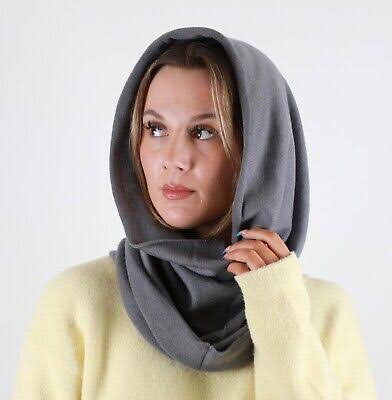
Snoods vs. Headbands: The Best Way to Keep Your Ears Warm
Share
As the temperatures drop, keeping our heads and ears warm becomes a top priority. Two popular headwear styles that can help achieve this are snoods and headbands. But which one is the best way to keep your ears warm? In this post, we'll delve into the world of snoods and headbands, exploring their differences, benefits, and styles to help you make an informed decision.
What are Snoods?
A snood is a type of headwear that covers the head, neck, and ears, providing ultimate warmth and protection from the cold. It's essentially a tube of fabric that you pull over your head, with some styles featuring a hole for your face or a ponytail. Snoods are often made from thick, warm materials like wool, fleece, or cotton, making them perfect for outdoor activities like skiing, snowboarding, or hiking.
What are Headbands?
A headband, on the other hand, is a band of fabric that wraps around your forehead or ears, providing targeted warmth and protection. Headbands are usually thinner and more versatile than snoods, making them suitable for a wide range of activities, from casual daily wear to athletic pursuits like running or cycling.
Snoods vs. Headbands: Key Differences
So, what sets snoods and headbands apart? Here are the key differences:
- Coverage: Snoods provide full coverage of the head, neck, and ears, while headbands only cover the forehead or ears.
- Warmth: Snoods are generally warmer than headbands due to their thicker material and fuller coverage.
- Style: Snoods are often more bulky and functional, while headbands are sleeker and more fashionable.
- Versatility: Headbands are more versatile and can be worn in various ways, such as around the forehead, ears, or even as a wristband.
Benefits of Snoods
Snoods have several benefits that make them an excellent choice for cold weather:
- Ultimate warmth: Snoods provide unparalleled warmth and protection from the cold, making them perfect for outdoor activities in extreme weather conditions.
- Protection from wind and snow: Snoods cover the neck and ears, protecting them from harsh winds and snow.
- Style: Snoods can add a stylish touch to your outfit, especially when worn with a coat or jacket.
Benefits of Headbands
Headbands also have their advantages:
- Targeted warmth: Headbands provide targeted warmth to the forehead or ears, making them perfect for milder weather conditions.
- *Versatility*: Headbands are incredibly versatile and can be worn in various ways to suit your style and activity.
- Breathability: Headbands are often thinner and more breathable than snoods, making them suitable for high-intensity activities.
Conclusion
When it comes to keeping your ears warm, both snoods and headbands have their merits. Snoods provide ultimate warmth and protection, making them perfect for extreme weather conditions, while headbands offer targeted warmth and versatility, making them suitable for milder weather and a wide range of activities.
Ultimately, the choice between snoods and headbands depends on your personal preferences, activities, and weather conditions. If you're looking for maximum warmth and protection, a snood might be the better choice. However, if you prefer a more versatile and stylish option, a headband could be the way to go.
Stay Warm and Stylish with Snoods and Headbands!
Whether you choose a snood or a headband, make sure to stay warm and stylish this winter. Explore our collection of snoods and headbands to find the perfect one for your needs, and don't forget to share your favorite headwear styles with us on social media